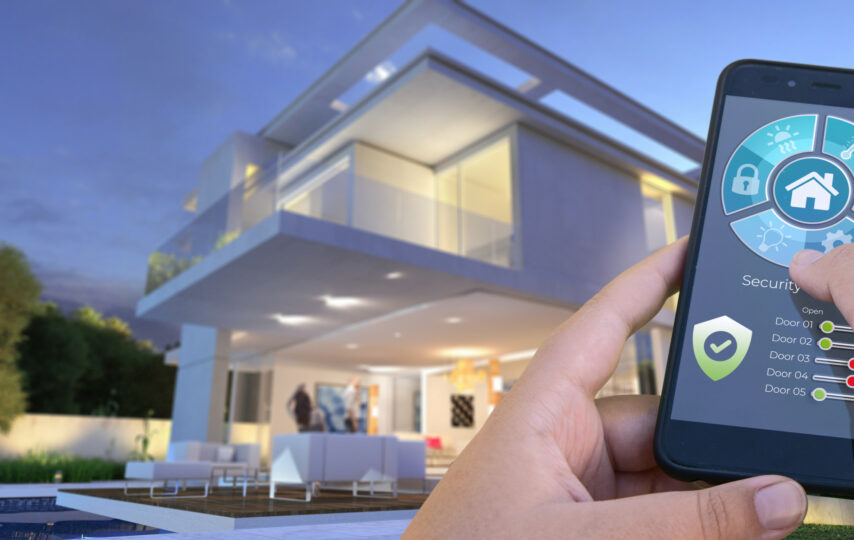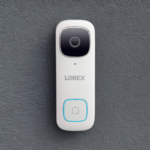Introduction
Welcome to the era of Smart home devices, where technology seamlessly integrates with our daily lives to create a more convenient, efficient, and connected living experience. In this write-up, we will explore the realm of intelligent residences. World of smart homes, exploring what they are, the importance of integration, the role of design and architecture, and the exciting career opportunities they offer.
What Is A Smart Home?
Essentially, an intelligent home pertains to a dwelling place. That incorporates various internet-connected devices and systems to automate and control different aspects of the home. These Smart home devices, often controlled through a centralized hub or mobile app, enable homeowners to manage and monitor their homes remotely, providing increased comfort, convenience, and security.
Understanding The Benefits Of Integrating Smart Home Devices And Systems
Integrating smart home devices and systems can offer several benefits, enhancing your home’s convenience, comfort, energy efficiency, and security. Here are some key advantages:
Convenience: Smart home integration allows you to control various devices and systems in your home through a centralized hub or a smartphone app.
You can automate tasks and create schedules, enabling effortless control of lighting, heating and cooling, appliances, and more. Voice commands through virtual assistants like Amazon Alexa or Google Assistant further streamline management.
Comfort
With smart home integration, you can create personalized environments tailored to your preferences. Adjusting lighting, temperature, and audiovisual settings becomes effortless, allowing you to create comfortable atmospheres for different activities or moods without manual adjustments.
Energy Efficiency
Smart home devices optimize energy usage, potentially saving costs and reducing environmental impact. For example, smart thermostats can learn your habits and adjust temperature settings accordingly, minimizing energy waste. Smart lighting systems can automatically turn off lights in unoccupied rooms, and smart power outlets can detect idle devices and cut off power to reduce phantom energy consumption.
Security
Smart home security systems provide enhanced protection and peace of mind. Integrated devices such as smart locks, door/window sensors, and security cameras enable remote monitoring and control. You can receive real-time notifications and access live feeds on your smartphone, allowing you to respond to potential threats or emergencies promptly.
Home Automation
Integrating smart home devices enables the automation of routine tasks. For instance, you can set up scenarios where lights turn on gradually in the morning, blinds open automatically, and your coffee machine starts brewing—all triggered by a single command or a predetermined schedule. This automation can simplify your daily routines and make your home more efficient.
.
Enhancing Convenience And Efficiency Through Seamless Connections
Enhancing convenience and efficiency through seamless connections refers to integrating technology and systems to create a smooth and efficient user experience across various devices and platforms. This concept is often applied in communication, transportation, and digital services. Here are some examples of how seamless connections can enhance Convenience And Efficiency
Communication
Seamless connections in contact can involve features like unified messaging, where all messages (text, email, chat, etc.) can be accessed and replied to from a single interface. It can also include real-time syncing of messages and notifications across multiple devices, ensuring that users can stay connected and respond promptly regardless of the device they are using.
Internet of Things (IoT)
Seamless connections in the IoT context involve interconnecting various devices and systems, enabling them to communicate and share data seamlessly. This allows for automation, remote control, and smart functionalities. For example, a smart home system can connect devices such as lights, thermostats, and security. It enables users to control and monitor them from a single interface or through voice commands, enhancing convenience and energy efficiency.
Cloud Computing
Cloud services offer seamless connections, enabling users to reach data and applications anywhere and using any device with internet access. This allows efficient collaboration, data storage, and software usage without local installations or manual transfers. Enhancing convenience and efficiency through seamless connections involves integrating and streamlining various technologies and systems to create a unified and user-friendly experience across different devices and platforms.
Design and architecture in Smart home
Designing and architecting a smart home involves integrating various technologies and Smart home devices to create an interconnected and automated living space. When creating the structure of a smart home, it is necessary to take into consideration the following significant elements:
Connectivity
A smart home relies on a robust and reliable network infrastructure to connect different devices and systems. Ensure the home has a high-speed internet connection, a stable Wi-Fi network, or alternative connectivity options like Ethernet or powerline adapters.
Central Hub
A central hub serves as the smart home’s brain, enabling device communication and control. It can be a smart speaker with voice control capabilities or a dedicated home automation hub. This hub should support protocols like Wi-Fi, Zigbee, Z-Wave, or Bluetooth to communicate with different devices.
Home Automation
Implement home automation systems to control various home areas, such as lighting, heating, ventilation, air conditioning (HVAC), security, and entertainment. Consider using smart switches, dimmers, thermostats, motorized blinds, and multi-room audio systems to enable centralized control.
Lighting
Install smart lighting solutions with dimming, color control, and scheduling features. This allows users to adjust lighting levels and create different moods or scenes. Motion and ambient light sensors can automate lighting based on occupancy and natural light levels.
Energy Management: Implement smart energy management systems to optimize energy consumption. This includes smart meters, energy monitoring devices, and programmable thermostats that adjust heating or cooling based on occupancy and outside temperature.
Security
Enhance home security with smart devices such as video doorbells, security cameras, smart locks, and window sensors. These devices can be integrated with a central security system and accessed remotely for monitoring and control.
Entertainment and Multimedia
Integrate smart TVs, streaming devices, audio systems, and voice-controlled assistants for a seamless multimedia experience. Consider installing a home theater system or multi-room audio setup to distribute audio and video content throughout the home.
Voice Control and User Interfaces
Enable voice control through smart speakers or voice assistants to control various devices and systems. Additionally, provide user-friendly interfaces like mobile apps or touch panels for manual control and monitoring.
Scalability and Future-Proofing
Design the smart home architecture to be scalable and adaptable for future technologies and upgrades. Consider the interoperability of devices and systems to avoid vendor lock-in and ensure compatibility with emerging standards.
Remember, designing a smart home requires careful planning and consideration of individual needs and preferences. It’s essential to balance convenience, functionality, and privacy while creating a comfortable and technologically advanced living space.
Career Development In The Field Of Smart Homes
Career development in smart homes can offer exciting opportunities as the demand for connected and automated living environments grows. Smart homes integrate technology and automation to enhance comfort, convenience, and energy efficiency. Here are some potential career paths and areas of Expertise within the field of smart homes:
Smart Home Developer/Engineer
As an intelligent home developer or engineer, you would design and develop the underlying systems and software that power smart homes. This includes creating the infrastructure for connecting devices, developing algorithms for automation, and ensuring interoperability between various smart devices.
User Experience (UX) Designer
UX designers are vital in creating intuitive and user-friendly interfaces for smart home systems. They focus on understanding user needs, conducting user research, and designing interfaces that provide a seamless and enjoyable experience for homeowners interacting with smart home devices and applications.
Data Analyst
Smart homes generate vast amounts of data that can be leveraged to optimize energy usage, enhance security, and provide personalized experiences. Data analysts in smart homes work with the collected data to gain insights, identify patterns, and make data-driven recommendations for improving efficiency, security, and user experiences.
Security Specialist
Security has become a critical concern with the increasing integration of devices and connectivity in smart homes. Security specialists in smart homes focus on ensuring the privacy and integrity of data, implementing robust authentication and encryption mechanisms, and addressing vulnerabilities in smart home systems.
Energy Efficiency Consultant
Smart homes often aim to optimize energy consumption through automation and intelligent controls. As an energy efficiency consultant, you would help homeowners implement energy-saving strategies, analyze energy usage patterns, recommend energy-efficient devices, and optimize smart home systems for reduced environmental impact.
Installation Technician
Smart home devices often require professional installation and setup. As an installation technician, you would install and configure smart home devices, integrate them into the homeowner’s network, and ensure proper functionality.
Sales and Marketing Specialist
As smart home technology becomes more prevalent, sales and marketing professionals are crucial in promoting and selling smart home products and services. They educate consumers, highlight the benefits of smart home technology, and develop marketing strategies to reach potential customers.
Conclusion Smart homes represent a transformative technological evolution, reshaping se the way we interact with our living spaces. From convenience and energy efficiency to enhanced security and accessibility, the benefits of smart homes are numerous. With ongoing advancements and the integration of AI, the future of smart homes holds great promise for improving our quality of life while creating more sustainable and connected.








